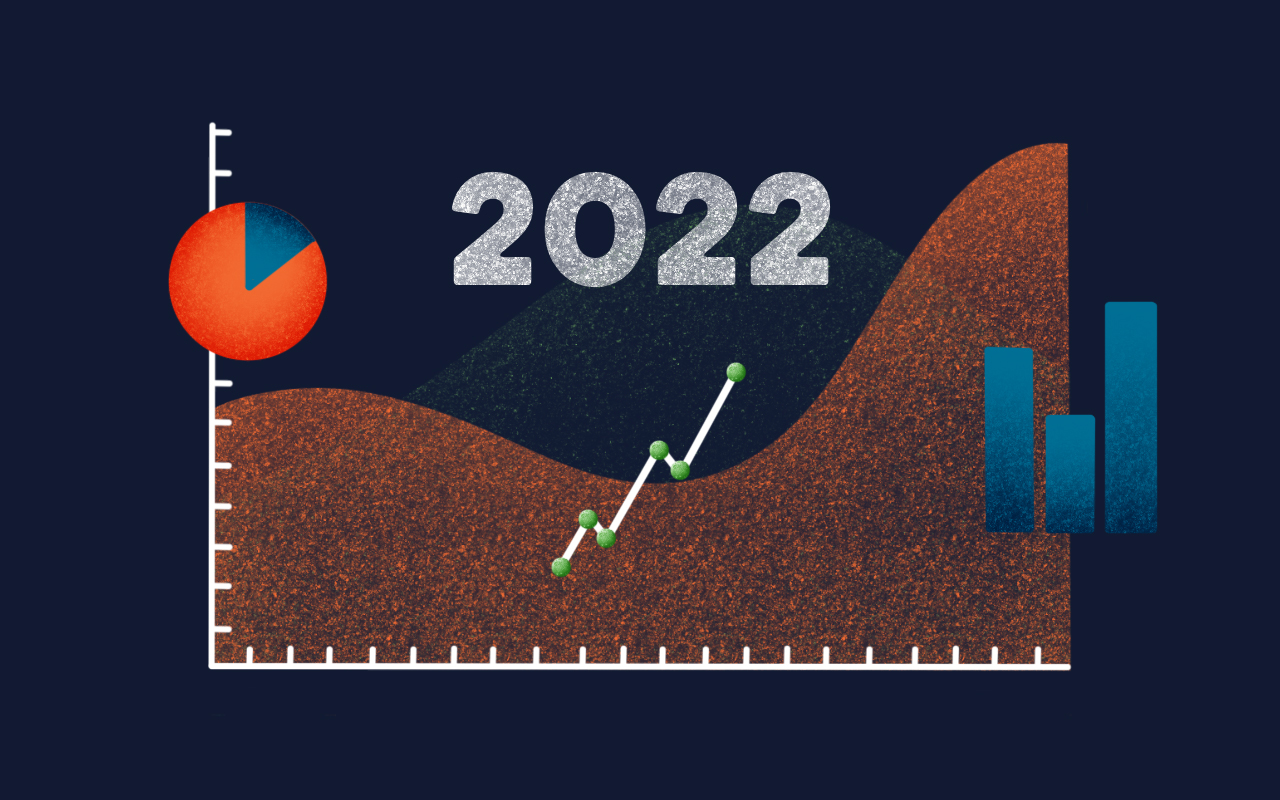The future is optimistic for workplace tech, but what can we expect to see in 2022? Last year, we made a few predictions that proved to be correct (such as the increase in automation efforts). This year, there are five new ITSM trends to watch for in the new year.
Important Workplace Statistics
Before we dive into ITSM trends to watch, we should first take a look at a few interesting statistics:
- 90% of the world’s data was generated within since 2019, according to IBM Smarter Business Review. Why does that matter? Because all of that data means more people are using tech than ever before – which can mean more tickets for the service desk (among other things).
- 42% of the US workforce works from home permanently, according to Stanford Research.
- Some researchers have even predicted as many as 80% of office jobs will shift to permanent remote work in the future. This means that tech will play a bigger role than ever in the workplace, and gone are the days of hardcopies.
All of this amounts to the IT service desk playing an even greater role in creating and delivering major business value.
What is ITSM?
Before we dive into the future of IT service, it is important that we are on the same page as to what ITSM is and what it encompasses.
ITSM is often a catch-all term for the processes of the IT team. The formal definition of ITSM by Axelos as “The implementation and management of quality IT services that meet the needs of the business. IT service management is performed by IT service providers through an appropriate mix of people, process and information technology.”
In other words, ITSM refers to the entirety of activities directed by policies, organized and structured in processes and supporting procedures, that are performed by an organization to design, plan, deliver, operate and control information technology services offered to customers.
ITSM ensures the appropriate mix of people, processes, and technology needed to meet a company’s goals. It organizes the activities of the IT organization to prioritize service delivery and ultimately drives down IT expenses. This is all made possible through IT service management software.
Future of ITSM and IT operations
We believe the following ITSM trends and predictions will help companies continually innovate and will make IT easy.
1. A Shift to Proactive and Predictive Capabilities
2020 brought us the reactive and abrupt shift to remote work and digital transformation. 2021 created the movement to proactive support. In 2022, this movement will continue to grow and bring predictive capabilities to take proactive IT support to the next level of self-healing. The future of service delivery means going beyond shift-left and self-help and into proactive and predictive capabilities.
Proactive and predictive service management means moving your focus from reacting to solving tickets to actively searching for problems and incidents before they happen in an effort to reduce downtime.
Moving to proactive and predictive support takes a few additional puzzle pieces in the ITSM toolbox. You’ll need to implement process automation and remote support, which we will discuss in greater detail in our next prediction. But that’s not the end of what you’ll need, as you’ll also benefit from IT infrastructure monitoring. With these pieces together, you can focus on process automation for proactive and predictive support.
2. Improved Remote Access Experience
In 2022, we expect to see the rise of proactive and predictive support but that means improving the remote access experience for both agents and customers. That’s it will also help agents to resolve issues without interrupting the customer or their workflow.
Remote access should be seamless and allow the service desk to access the user’s desktop without causing a major disruption. Process automation technology and remote support access solutions should enable support agents to have a comprehensive and exhaustive end-to-end view of all IT services from infrastructure to endpoints while providing the ability to fix issues proactively before they have a chance to impact the business. For example, you can identify that a user is not running the latest software release that will generate performance issues, and in turn you can push the update remotely.
To learn more about EasyVista’s remote access solution, click here.
3. Greater Focus on IT Infrastructure Monitoring
Earlier we mentioned IT infrastructure monitoring as part of proactive and predictive support, but it bears mentioning that 2022 will bring an overall greater focus on organization which goes hand-in-hand with IT infrastructure monitoring.
In other words, IT infrastructure is the collective set of all IT software, services, devices, and supporting equipment.
Why does IT infrastructure matter so much? Think of IT infrastructure as a map, with IT infrastructure monitoring working as the weather radar on that map. If one aspect of IT infrastructure, like an external software that is integrated into another app used to complete a job, stops working or goes down, it can have a ripple effect and negatively impact the rest of the IT operations and integrations. Not to mention the negative business impact and loss of revenue caused by system outages.
2025 Gartner®Market Guide for ITSM Platforms
Get the latest ITSM insights! Explore AI, automation, workflows, and more—plus expert vendor analysis to meet your business goals. Download the report now!

4. Increased in Persona-Based Interactions
As more of Gen Z enters the workforce, the demand for personalized service increases – especially in those who work from home and might otherwise feel disconnected from the business. Customers expect the same level of support and customization that they receive in their personal lives. With that in mind, it is our prediction that persona-based interactions will increase in the coming year.
Creating personas takes time and focus, but the best place to start is to understand the unique needs of your customers based on their business unit, hardware and software they use, and even their preferred methods of accessing support. From there, create fictional users to represent your customers and work to provide service geared toward those personas. Then, once you’ve created those personas, you can shift to a more customer centric experience.
We’re already seeing more IT service desks shift to this more customer-focused and tailored support experience, which we predict will only grow.
You can learn more about how to create business user personas by downloading this Gartner report.
5. Simplified Processes through Expanded AI and Automation
AI and automation have already been popular in ITSM and the IT service desk generally, however we can expect to see a greater focus on simplifying processes through automation in the future.
Artificial intelligence (AI) and machine learning (ML) are major drivers in modern service management. AI on its own can power automation and AITSM but paired with machine learning it can create an intuitive experience that continues to improve over time. By analyzing user data, incident patterns, and search habits which are continually being input, the software will better understand user intent, predict future issues, provide relevant search results, and even interact via intelligent automation like AI powered chatbots.
However, automation doesn’t have to be as complicated as that, and we can expect to see an increase in automating the most simple processes like password resets and equipment ordering. This will help lower costs and improve the employee experience.
2022 Will Take It Back to Basics
2022 is the year of streamlining and simplifying to shift from reactive to proactive IT service delivery and support – but that doesn’t need to be as complicated as it sounds. That’s why this year, we can expect to see the IT service desk taking it back to basics and re-evaluating tools and solutions. After all, easy is necessary as business scales and expands, giving IT and the customer a better experience.


